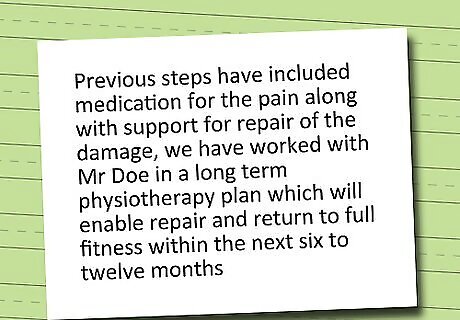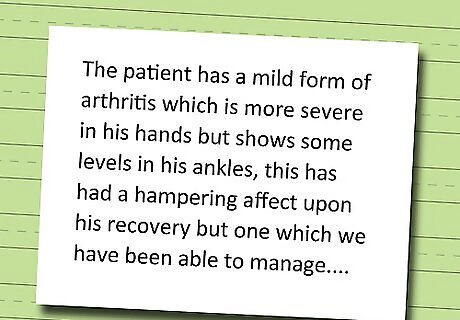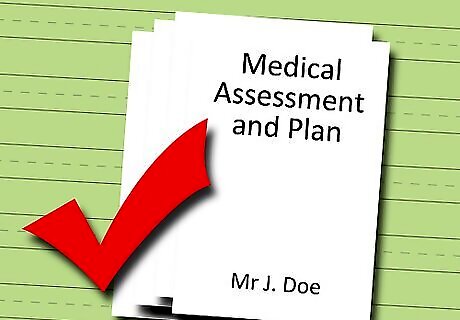
views

Determine the chief complaint by listening to the patient's explanation and then briefly interpret the direct point of the issue.

Discuss with the patient how long the issue has been going on and put that information into the assessment report.

List all relevant personal information about the patient such as age, gender, and even race. While they often appear trivial, these issues could play a part in the treatment plan as well as determining the severity of the problem.

Reiterate the patient's complaint and what events may have led up to it in sentence form.

List any previous steps taken by the patient and medical professionals to correct the patient's distress. You need to list not only what in the past history has created improvement, but also what has not worked.

Pay attention to details of any existing medical conditions. These can hinder proper healing or correction of the problem.

Talk about the fact that accurately reporting these things is the responsibility of the patient once he or she receives the assessment from the physician.

Discuss the plan of action the patient needs to follow. It is also a good idea to mention the results that are hoped for along with the next steps if the first directions do not work.

Maintain a total length of no more than 5 pages when writing the medical assessment and plan. Effective, yet brief, documentation of a patient's complaint is what you are after. You must be concise.
Add your assessment and plan to the patient's file when completed.



















Comments
0 comment